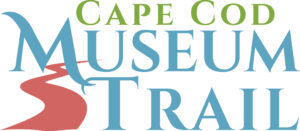The Atwood House Museum’s entire collection of 120 Nautical Charts, mostly from the 19thcentury, has been restored and digitally imaged. These images, made by means of high-resolution scans of the charts by the Digital Commonwealth, are permanently maintained on the Digital Commonwealth website.
This represents the achievement of the goal of the Chatham Nautical Chart Initiative project that was supported by a grant from the Town of Chatham through its Community Preservation Committee.
Thumbnail images of the charts in its collection are also exhibited in the NAUTICAL CHARTS VIRTUAL GALLERY where they are organized by the region of the world and our collection can be browsed by scrolling through the images. Eventually all of our charts will be exhibited in the VIRTUAL GALLERY. Currently 50 charts are on display here.

A significant number of the charts in the collection have been identified with specific Chatham shipmasters, including Captains Gershom Jones, Charles W. Jones, Simeon Taylor, John Taylor, Cyrus Eldredge and Charles W. Hamilton. Certain of these charts were used aboard sailing and steam ships named: Revere, R. M. Heslin, Sylph, SS Kin Kiang, SS Mississippi, Thordis and Red Cloud. Pencil notations by mariners reveal details of specific voyages (including daily navigational fixes) as the courses were plotted.
In the collection are “Blueback” charts published by British firms (Imray, Norrie, Laurie, Chas. Wilson), as well as charts published by the British Admiralty, the U.S. Navy Hydrographic Office, private Dutch companies, the US Coast Survey and the private firms of Chas. Copley and E. & G. W. Blunt.
The collection also features several charts produced by George Eldridge and his son, George W. Eldridge. The story of the Eldridges, father and son, is told in an exhibit in the Wendy Wade Costello Gallery on the lower level of the Museum. “Chart George” Eldridge, born in Chatham in 1821, established one of the two most exceptional private chart-producing enterprises in America. While smaller than that of the Blunts, it was more innovative and longer lasting. His first chart, the famous 1852 “Eldridge Upside-Down Chart” of Monomoy Island and the nearby shoals (south is to the top), is displayed in the Wendy Wade Costello Gallery exhibit.


Leave A Comment